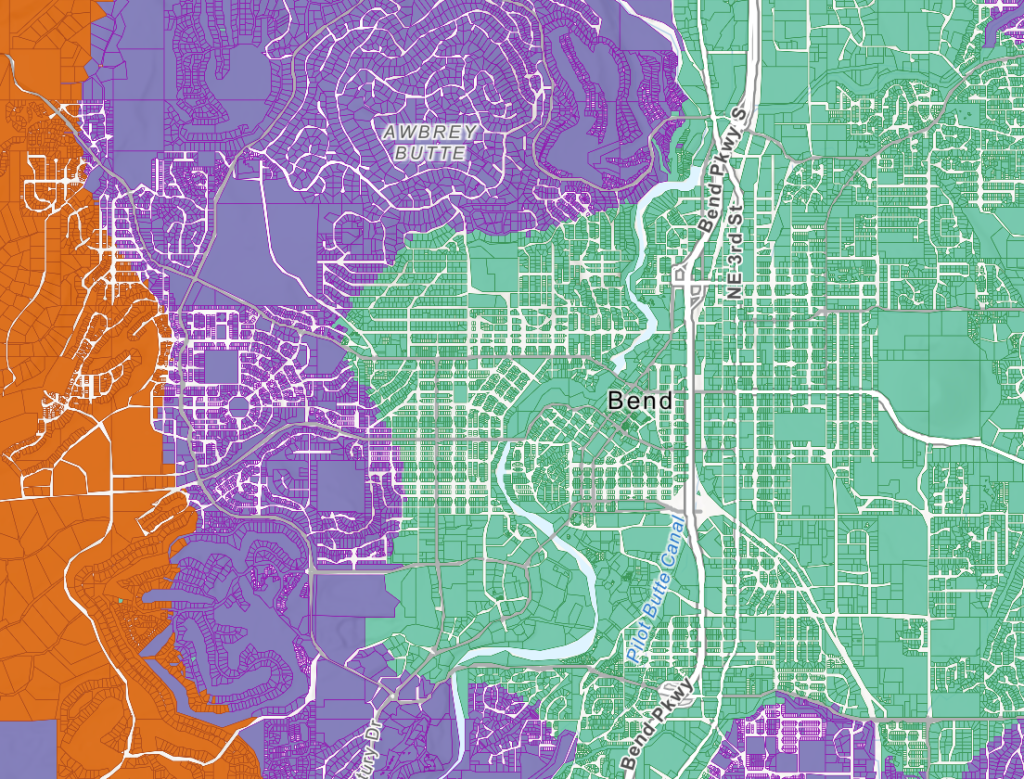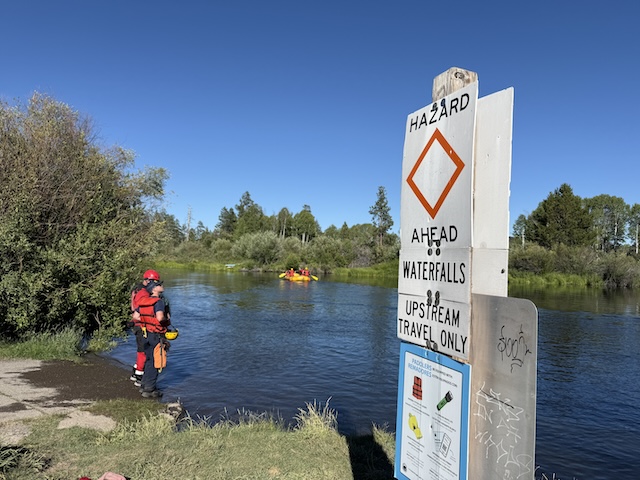Oregon lawmakers repeal controversial wildfire hazard map
Published 9:50 am Wednesday, June 25, 2025

- Screenshot of Bend as depicted on the state's new wildfire hazard map. Green represents low hazard classification, purple is moderate and orange is high.
Sen. Golden of Ashland said he was opposed to its holdup and regretted that it had become part of partisan negotiations
The Oregon House voted Tuesday to repeal a controversial wildfire hazard map and home-hardening requirements that accompanied it.
Rural Oregonians and their representatives in the Legislature had asserted for months that the map was flawed — claiming to know the risks on a property-by-property basis without anyone having eyeballed each property — and was unfairly driving up insurance costs.
Lawmakers on both sides of the aisle agreed the map was problematic, yet Senate Bill 83, to repeal the map, was held up for a month.
Trending
Then, on Tuesday, the House passed it with a single no vote. It had been unanimously approved by the Senate in April and now heads next to Gov. Tina Kotek’s desk for a signature.
The map repeal, which started with bipartisan support, ended up being hugely contentious — at least in part because lawmakers had not yet come up with a way to pay for wildfire mitigation or fire suppression.
After the bill passed the Senate, House lawmakers derailed it from a floor vote by sending the measure to the House Rules Committee. House Democrats said they wanted to consider the bill in a larger framework of fire mitigation policies, but Republicans cried foul, alleging that the map was being held hostage in return for their vote to support new wildfire funding. The bill’s carrier in the Senate, Democrat Jeff Golden of Ashland, said he was opposed to its holdup and regretted that it had become part of partisan negotiations.
“This process is one that has been incredibly frustrating, incredibly political and one that makes me really, really, really angry,” House Republican Leader Christine Drazan said in a floor speech Tuesday.
Drazan castigated Democrats for using the bill to try to leverage Republican votes and alleged the majority party had moved the bill around the Capitol in a way that denied Republicans credit for the work they had done on it. Instead of introducing a House proposal that mirrored Senate Bill 83, the proposal to repeal the maps was championed in the Senate by Golden, a Democrat, Drazan said. And though Republicans had spent several weeks trying to pull the bill out of committee to a full vote on the floor, the final and successful attempt to move the bill was made Monday by Central Oregon Democrat Emerson Levy.
“In the final days of this session, how this bill has actually come forward has broken my heart. It didn’t have to be this way,” Drazan said. “We were partners in this work from the beginning … we wanted to be at the table.”
Trending
Levy’s success moving the bill out of committee came shortly after the House approved a new nicotine tax on Monday to fund wildfire prevention efforts. House Speaker Julie Fahey had said she didn’t want to repeal the maps without a source of funding for fire prevention. Fahey’s office said Tuesday that she was not immediately available for comment on Drazan’s critical floor speech.
Levy — who supported Republican efforts to pull Senate Bill 83 to the floor and was the lone Democrat who voted against stalling the bill in House Rules — said in her floor speech on Tuesday that she would have let a Republican carry the bill, if they had asked her.
“Today we have an opportunity to come together as Oregonians of all stripes to put this conversation around the maps to rest and move forward with the right strategy,” Levy said on Tuesday, advocating for the map repeal. “I can certainly appreciate the challenging political process that has happened this session.”
The Legislature in 2021 directed the Oregon Department of Forestry and Oregon State University to develop a map to show Oregonians how much of a wildfire risk properties likely face. The latest iteration, released in January, was also intended to be used to decide where to prioritize fire mitigation efforts and which property owners would be subject to home hardening requirements.
But it prompted huge pushback from rural property owners and lawmakers who interact with them.
Republicans argue it is “riddled with inaccuracies” given that no one surveyed individual properties. Homeowners expressed fear that insurance companies have used the map to raise their premiums or deny coverage. Under state law, insurance companies are prohibited from using the map for that purpose, and the state’s Division of Financial Regulation argues they never have. But rural property owners have insisted they felt punitive effects from what they say is a flawed map.
“I agree that we need to be aggressive about our (fire) prevention program, but these maps turned out to have very negative effects, where they should not have applied,” Salem Republican Rep. Kevin Mannix said.
Senate Bill 83 revokes the map and any related requirements that property owners in hazard zones adhere to special construction rules related to their risk, though local jurisdictions can still require property owners to follow fire-safe building regulations.
Rep. Dacia Grayber, a Portland Democrat and firefighter, cast the only no vote in the House. Grayber argued that the map repeal is not going to fix the problem of rising fire insurance costs, in part because insurers use their own, more restrictive and specific hazard maps. She said she feared abandoning mandatory building codes and defensible space regulations, which work to protect homes.
“We have a tool here that we are walking away from that could potentially be a gamechanger,” Grayber said.
Grayber urged Oregonians to take steps that can keep them, their homes and their relatives and pets safe, like removing juniper trees, firewood, and flammable brush from around their homes, knowing their evacuation routes and having a go-bag ready in the event they need to flee a wildfire.
“We have a much longer conversation to have on fire safety in Oregon,” Grayber said. “I hope we will continue to visit that with intensity and resolve.”








